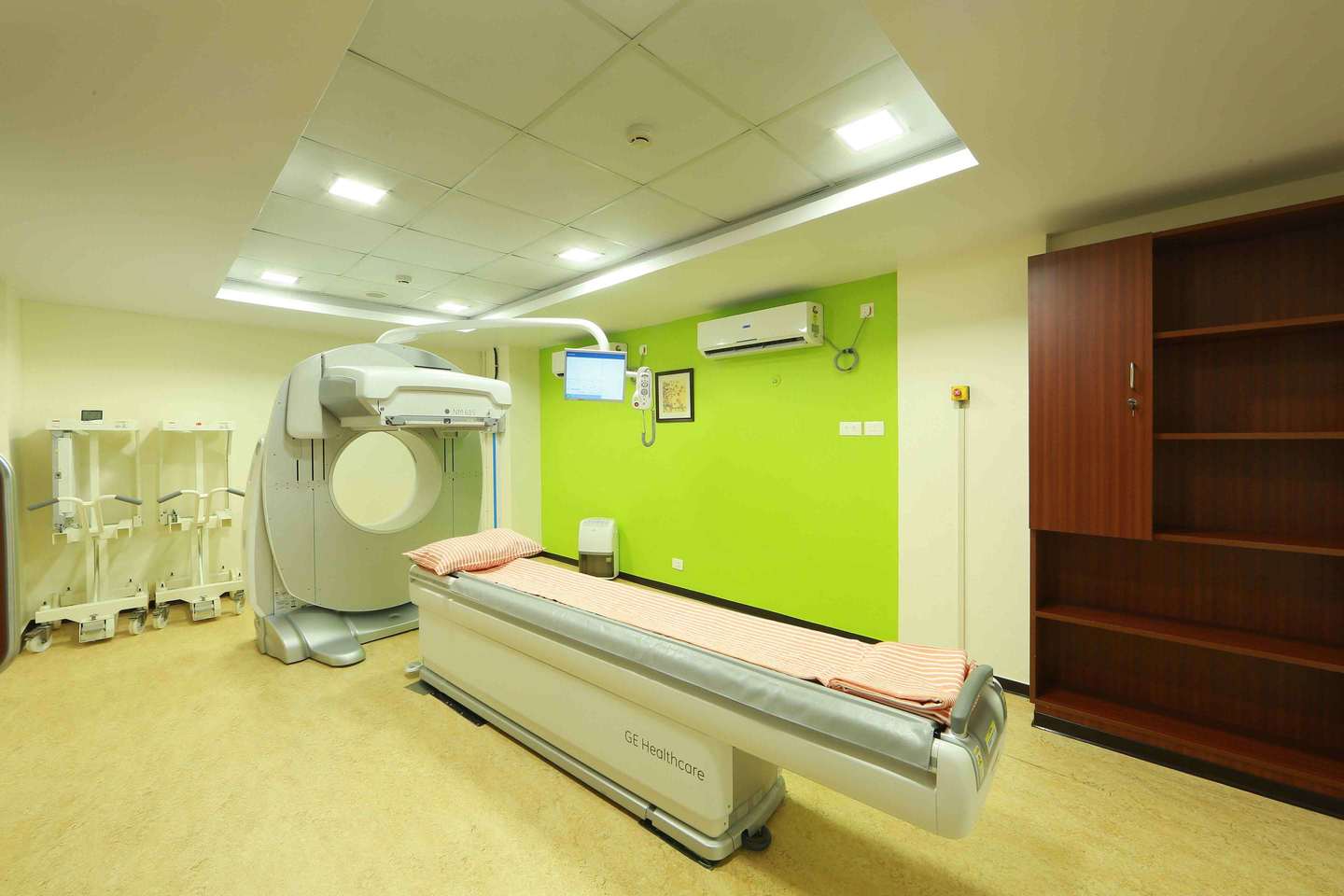

Single photon emission computed tomography (SPECT): SPECT images are obtained following an injection of a suitable radiopharmaceutical. The injected medication sticks to specific areas in the body, depending on what radiopharmaceutical is used and the type of scan being performed, for example. it will show bone for a bone scan, and gall bladder and bile ducts for a hepatobiliary scan. The radiopharmaceutical is detected by the gamma camera which rotates over a 360 degree arc around the patient, allowing for reconstruction of an image in three dimensions.

A thyroid scan uses a radioactive tracer and a special camera to measure how much tracer the thyroid gland absorbs from the blood. The tracer can be swallowed or can be injected into a vein. It travels through your body, giving off radiation signals. The camera "sees" the signals and can measure how much tracer the thyroid absorbs from the blood. A thyroid scan can show the size, shape, and location of the thyroid gland . It can also find areas of the thyroid gland that are overactive or underactive. The camera takes pictures of the thyroid gland from three different angles. The radioactive tracer used in this test is technetium. Before a thyroid scan, blood tests are usually done to measure the amount of thyroid hormones (TSH, T3, and T4) in your blood.
DTPA scan is a radioactive tagged RENAL SCAN used to test the function of kidneys as well as find out if the problem is related to the obstruction of the urine flow in the ureters / bladder. It can also be used for checking circulation of blood through arteries of the kidney as well reflux of urine from bladder back into ureters. In summary it is a test for functional evaluation in comparison to ultrasound which is a test for structural evaluation and in combination can provide both functional and structural evaluation of kidneys and the urinary tract. In context of mild hydronephrosis and duplicate collecting system DTPA scan will be useful to find out if there is any obstruction in the urinary system on left side to explain for the mild hydronephrosis. DTPA is also a good test to follow up, improvement in kidney function following specific treatment.
A DMSA scan is a radionuclide scan that uses dimercaptosuccinic acid (as a radioactive tracer) in assessing renal morphology, structure (static scan), and function. It is sometimes used as a test for the diagnosis of acute pyelonephritis. The major clinical indications for this investigation are the detection and/or evaluation of a renal scar, the small or absent kidney (renal agenesis), an occult duplex system, certain renal masses, systemic hypertension or suspected vasculitis.
A bone scan is a test that can find damage to the bones, find cancer that has spread to the bones, and watch problems such as infection and trauma to the bones. A bone scan can often find a problem days to months earlier than a regular X-ray test. During a bone scan, a radioactive substance called a tracer is injected into a vein in your arm. The tracer travels through your bloodstream and into your bones. Then a special camera takes pictures of the tracer in your bones. Areas that absorb little or no amount of tracer appear as dark or "cold" spots. This could show a lack of blood supply to the bone or certain types of cancer. Areas of fast bone growth or repair absorb more tracer and show up as bright or "hot" spots in the pictures. Hot spots may point to problems such as arthritis, a tumor, a fracture, or an infection.
A bone scan is done to:
A hepatobiliary (HIDA) scan is an imaging procedure used to diagnose problems of the liver, gallbladder and bile ducts. For a HIDA scan, also known as cholescintigraphy and hepatobiliary scintigraphy, a radioactive tracer is injected into a vein in your arm. The tracer travels through your bloodstream to your liver, where the bile-producing cells take it up. The tracer then travels with the bile into your gallbladder and through your bile ducts to your small intestine. A nuclear medicine scanner (gamma camera) tracks the flow of the tracer from your liver into your gallbladder and small intestine and creates computer images.
A HIDA scan might help in the diagnosis of several diseases and conditions, such as: